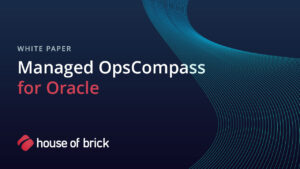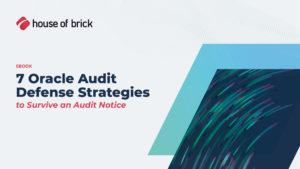Benjamin Franklin is quoted as saying “in this world, nothing is certain except death and taxes.” Well, Mr. Franklin obviously never knew about Java pricing and Oracle’s penchant for squeezing every drop of money from their customers that they possibly can.
What Changed with Oracle Java Pricing?
Just when you thought it was safe to deploy Java SE on your subscription-licensed server, Oracle has changed the rules (again).
New Oracle Java Subscription Pricing Model
As of January 23, 2023, Oracle has overhauled its Java SE subscription plan making the use of Java potentially far more expensive for organizations than the previous plan.
The new Oracle Java SE Universal Subscription Global Price List has almost completely eliminated the ability to count physical Processors on which Java is “installed and/or running” (unless you happen to have more than 50,000 Processors, not counting desktops, on which Java is installed) for your subscription, and changed the metric to “Employee.” They further define Employee as:
- “all of Your full-time, part-time, temporary employees”, AND
- “all of the full-time employees, part-time employees, and temporary employees of your agents, contractors, outsourcers, and consultants that support Your internal business operations.”
How This Impacts Your Business
What this means for your organization is that regardless of your Java users or server footprint, you now must count every employee, contractor, consultant, and agent to determine your Java subscription bill. You are potentially on the hook for a massive subscription fee increase that may have very little benefit to your operation. Let’s consider some before-and-after pricing for a few different scenarios:
Calculating the Cost: Oracle Java Pricing Before & After
Scenario 1: Medium-sized business with small Java footprint
- Employees: 250
- Java Desktop Users: 20
- Java Installed Processors: 8
- Old Model: $3,000/year
- New Model: $45,000/year
- Percent Increase: 1,400
In the old subscription model, the organization would pay $2.50/mo for each of the 20 desktop users and $25.00/mo for each Processor where Java SE was installed and/or running. In the new model there are no separate charges for desktop and server, but now every employee will be charged for the Java subscription.
Now let’s consider a similar-sized company, but with a larger Java footprint, and every employee requiring Desktop access.
Scenario 2: Medium-sized business with large Java footprint
- Employees: 250
- Java Desktop Users: 250
- Java Installed Processors: 48
- Old Model: $21,900/year
- New Model: $45,000/year
- Percent Increase: 105%
Even when every employee in the company is using Java in this scenario, the subscription price per year will more than double!
The numbers will get more staggering with larger companies. Even Oracle’s Pricing Example shows the large company (28,000 employees and agents) will have an annual subscription bill of $2,268,000!
Oracle’s Sales Push and Audit Risks
As of today, we have already heard from our customers that they are being contacted (harassed) by their Java sales representatives to adopt this “easier to understand subscription model.” We expect that legions of Oracle salespeople will be salivating to lock in these new subscriptions before the February end-of-quarter deadline for their personal bonuses. This Java change also gives each Oracle rep an excuse to try to audit customers on their entire Oracle footprint (database, middleware, Java, applications), so preparing now is key to reducing potential unexpected costs.
What Should You Do Now?
We are continuing to analyze this change, and how it will impact our customers. We are also developing some emergency assessment services to help our customers determine the impact, and how to reduce potential cost (without reducing employee count).
Here are some things we would recommend you consider before engaging with an Oracle rep on this topic:
Explore OpenJDK Alternatives
Many applications support OpenJDK, an open-source alternative to Java SE. Check with vendors to see if switching is feasible.
Review Your Oracle Licenses
Some Oracle applications, like Oracle Fusion Middleware, may include bundled Java SE entitlements. Reviewing these can help avoid unnecessary subscriptions.
Assess Compliance Risks
Consider your license compliance on all Oracle products. We expect Oracle to increase audit activity, and they will not limit the scope to Java-only. At a minimum they will audit all Oracle technology products (database, middleware, Java). If you have any compliance issues, determine what can be done to address those before an audit occurs.
Oracle’s FAQ Update: Still No Clarity
Oracle just published a FAQ on their new license subscription pricing that clarifies some things and confuses others. It states that “Customers of the legacy Java SE Subscription products continue to receive all the original benefits and may renew under their existing terms and metrics.” This is good news for customers that already have a Java SE Subscription based on Processor counts and Desktop users, but it does not address key concerns or questions:
- What if I need to increase my Processor footprint? Can I do so under the terms and metrics of the legacy subscription, or do I have to change to the new Universal Subscription?
- What if I need to decrease my Processor footprint? Will my subscription price go down?
This is not good news for Java customers that have not been on the legacy subscription. New customers will be forced into the new Universal Subscription and will likely pay at least double what the previous subscription would have cost.
Need Help Managing Oracle Java Licensing?
Avoid Costly Mistakes with Opscompass
At House of Brick we have the expertise, services, and product solutions to help you. Opscompass is our product that helps organizations proactively stay compliant, control costs, and avoid unnecessary Oracle licensing fees.
- Assess your Oracle license compliance before an audit happens.
- Determine if OpenJDK migration is a viable option.
- Develop cost-saving strategies to reduce Oracle expenses.
- Defend against Oracle audits and sales pressure.
Talk to an expert to get started. You don’t have to face this alone!
FAQ: Oracle Java Pricing Changes
Oracle has replaced its per-processor licensing model with a per-employee subscription model, requiring organizations to pay based on total headcount.
Organizations that previously paid based on Java instances now must pay for all employees and contractors, increasing costs significantly.
Yes, OpenJDK is a free alternative to Oracle Java SE. However, some applications may require Oracle Java—check with vendors before switching.
If you are a new Oracle Java SE customer, you must adopt the new pricing model. If you already have an older subscription, you may be able to renew under legacy terms.
Yes. Oracle has a history of aggressive audits and may use Java licensing as a way to audit your entire Oracle footprint (database, middleware, and apps).
- Evaluate OpenJDK as an alternative.
- Check for bundled Java entitlements in existing Oracle products.
- Work with Opscompass to optimize your Oracle licensing strategy.







